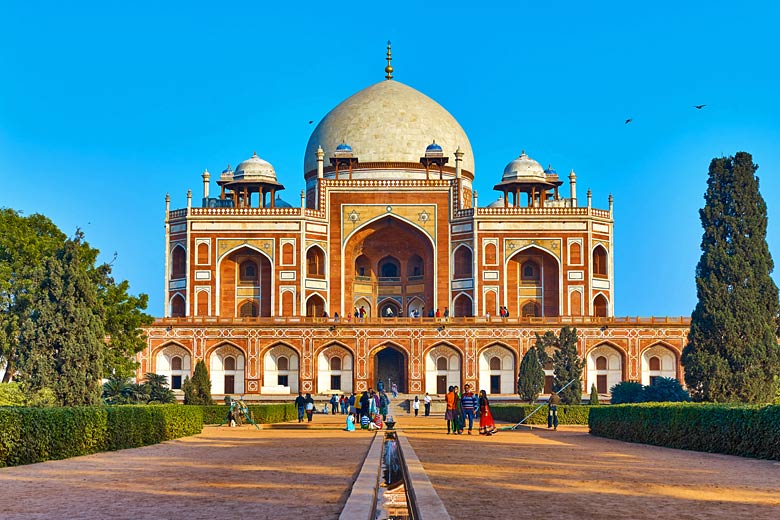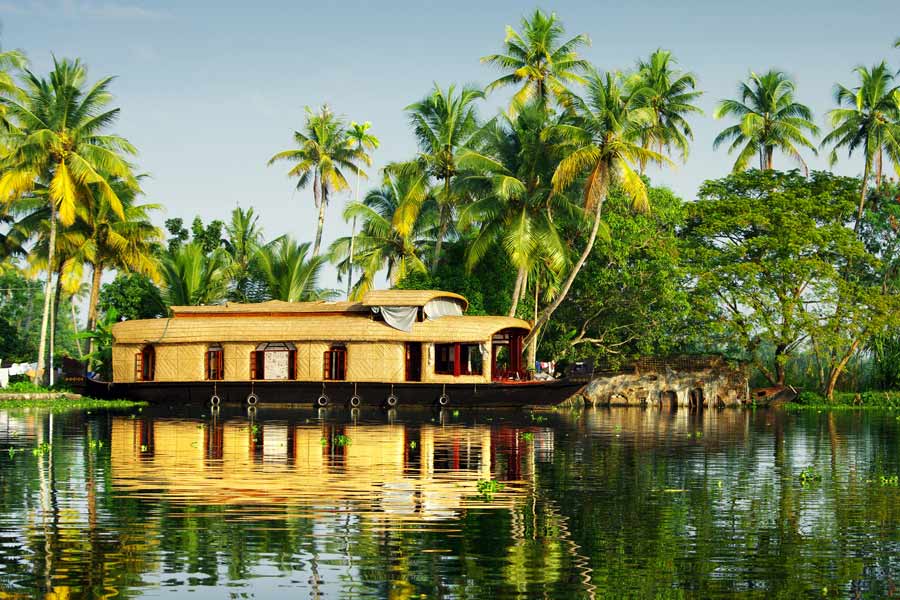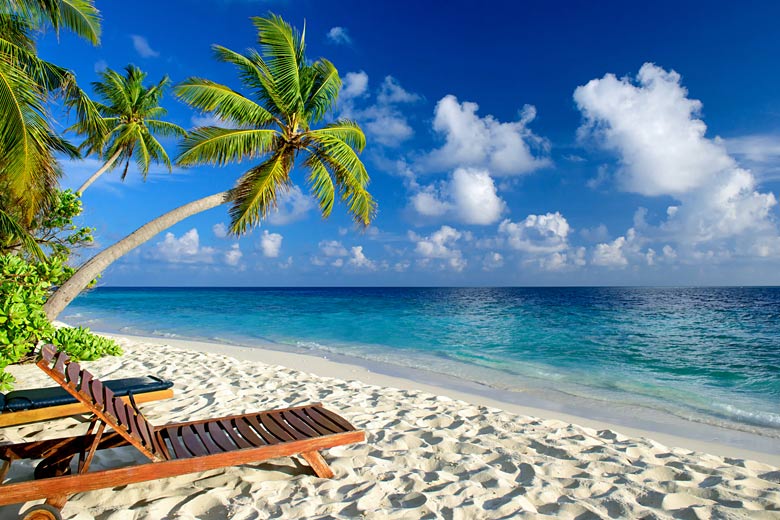- Book online with TUI & save up to 7% on holidays
- FREE child places available for select holidays
- Pay £0 deposits with direct debit & spread the cost
Best time to visit India
Find the best time to visit India and plan your perfect trip in 2025/2026. Get holiday inspiration, weather guides, travel advice and find great deals.
- Best time to visit
- Weather by month
- 5-day weather forecast
- Destinations
- Travel advice
- Deals & discounts
India by month
Jan Feb Mar Apr May Jun Jul Aug Sep Oct Nov Dec
Recommended for India
Top India destinations
Below are the temperatures expected today at popular countries, regions and places in India. Select a destination to compare today's forecast with average weather conditions.
All India regions
All India destinations
- Agatti Island
- Agonda Beach, Goa
- Agra
- Ahmadabad
- Ajmer
- Alleppey, Kerala
- Amritsar
- Anjuna, Goa
- Arambol Beach, Goa
- Arpora, Goa
- Arrosim, Goa
- Aurangabad
- Baga, Goa
- Bandhavgarh
- Bangalore
- Benaulim, Goa
- Betalbatim, Goa
- Bikaner
- Bogmalo, Goa
- Calangute, Goa
- Calcutta
- Candolim, Goa
- Cavelossim, Goa
- Chandigarh
- Chennai
- Chowara, Kerala
- Cochin, Kerala
- Colva, Goa
- Darjeeling
- Dharamsala
- Dona Paula, Goa
- Gangtok
- Hyderabad
- Jaipur
- Jaisalmer
- Jodhpur
- Kalimpong
- Kanha
- Kaziranga
- Khajuraho
- Kollam, Kerala
- Kottayam, Kerala
- Kovalam, Kerala
- Kozhikode, Kerala
- Kumarakom, Kerala
- Leh
- Lucknow
- Madurai
- Mahabalipuram
- Majorda, Goa
- Mangalore
- Miramar, Goa
- Mobor, Goa
- Morjim, Goa
- Mount Abu
- Mumbai
- Munnar, Kerala
- Mysore
- Nagpur
- New Delhi
- Ooty
- Panaji, Goa
- Patna
- Pelling
- Periyar, Kerala
- Pondicherry
- Poovar, Kerala
- Port Blair
- Puri
- Ramnagar
- Ranthambore
- Rishikesh
- Shillong
- Shimla
- Sinquerim, Goa
- Srinagar
- Surat
- Thiruvananthapuram, Kerala
- Udaipur
- Vagator, Goa
- Vainquinim, Goa
- Varanasi
- Varca, Goa
- Varkala, Kerala
- Visakhapatnam
When is the best time to visit India?
The best time to visit India (New Delhi) is February and November based on the following average weather conditions.
Maximum daytime temperature = 22 - 30°C [remove]
Daily hours of sunshine = 10 hours or more [remove]
Change the criteria to reflect your weather preferences.
Max Day Temperature (°C)
- Jan
 21
21 - Feb
 24
24 - Mar
 30
30 - Apr
 36
36 - May
 39
39 - Jun
 39
39 - Jul
 35
35 - Aug
 33
33 - Sep
 34
34 - Oct
 33
33 - Nov
 28
28 - Dec
 23
23
Which is the hottest month in India?
The hottest time of year in New Delhi, India is normally June. Expect maximum daytime temperatures to reach 39°C with extreme heat and humidity.
Which month has the most rain in India?
In terms of rainfall, August is usually the wettest month in New Delhi, India with 257mm on average. There are normally 10 days in August with some rain.
When is it sunniest in India?
The sunniest time of year in New Delhi, India is normally November with bright sunshine on average for 76% of daylight hours; that's 8 hours of sunshine per day.
Best time to visit
The weather guide for India (New Delhi) shows long term weather averages processed from data supplied by CRU (University of East Anglia) & today's weather forecast provided by meteoblue. Find out more about our data sources.
Metric (°C / mm) | Imperial (°F / inches)
India overview
Expect a hot, tropical climate when visiting India with variations from region to region.
If you like temperate conditions, go in the winter when evenings and mornings are cool and crisp and days dry and sunny.
Between April and June, in the run-up to the monsoon season, conditions can be insufferably hot and dusty. June to September is the monsoon season when you should brace yourself for heavy rain.
However, this should only be taken as a broad guide to a country where local conditions differ greatly from place to place.

In the Himalayas, winter conditions are cold and wet with heavy snow while mid-summer is unpleasantly hot.
On the northern plains of India, extending from Amritsar in the west to Calcutta in the east, you'll find a climate of extremes.
To the east, hot and thundery summer weather between March and June is followed by a very oppressive monsoon season when extremely high humidity makes life unpleasant.
To the west, (Rajasthan) and northwest of Delhi, desert conditions prevail and summers are drier.
The winter months (December to February) bring crisp, sunny weather by day but nights are chilly.
The best time to visit the extreme northeast of India (Assam) is late autumn or spring. At these times, the weather is warm, dry and sunny.
For the entire summer, Assam is a washout, literally, with tumultuous rains making life unbearable.
Take light clothes for the daytime, warmer attire for the evenings and, if you must go in the summer, good waterproofs!
On India's central plateau, temperatures are slightly lower and conditions are, therefore, more pleasant during the hot season. However, the monsoon rains can be intense.
The west coast of India, which includes Mumbai (Bombay) and Goa, consists of a narrow coastal plain rising to steep mountains, the Western Ghats.
During the winter and spring (November to April) daytime temperatures are warm and sunny and humidity is at its lowest.
In the hot season, conditions can be unbearable unless you go way up into the hills and very heavy monsoon rains fall from June to September. In the southwest, the big rains come earlier and summers are cooler than in the north.
High humidity can make conditions stifling except on the coast where the stickiness is dissipated by sea breezes.
The southeast of India receives its rains in the late autumn, from October to December, and has hot, muggy weather throughout the year.
The only relief is to be found in the cooler hill region but, here, winter temperatures can fall very low and warm clothing is recommended.
India travel features
Do you want to learn more about India? Read our latest features covering travel tips and insider destination guides on where to go and what to do in India.
Be inspired
Get your weekly fix of holiday inspiration from some of the world's best travel writers plus save on your next trip with the latest exclusive offers
We promise not to share your details
Related posts
Popular travel offers
Explore holidays in the sun for less
- Beach holidays
- Family holidays
- City breaks
- Summer holidays
- Winter sun holidays
- Holiday offers
- Top travel brands
- Airlines & flights
- Discount hotels
- Airport parking deals
- TUI
- Jet2holidays
- easyJet holidays
- Love Holidays
- January sales
Airport parking
- Manchester Airport
- Stansted Airport
- Bristol Airport
- Luton Airport
- Birmingham Airport
- Edinburgh Airport
- Gatwick Airport
- Glasgow Airport
- Newcastle Airport
Airport lounges
- Manchester Airport
- Birmingham Airport
- Bristol Airport
- Edinburgh Airport
- Glasgow Airport
- Heathrow Airport
- Newcastle Airport
- Stansted Airport
- Gatwick Airport











 TUI deal finder
TUI deal finder





















